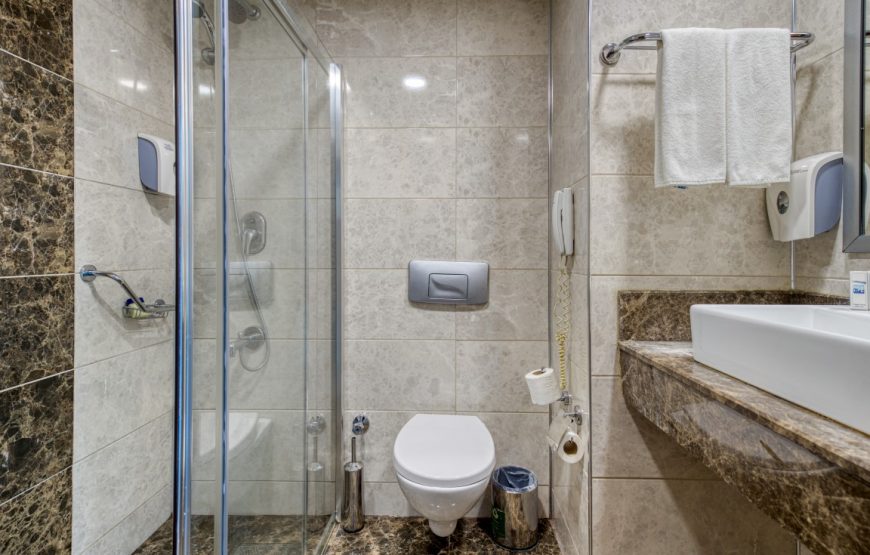from 0 review




Sealife Family Resort Hotel – Antalya will happy to welcome you. Don’t miss current promotional price’s, book it right away and pay later. Holidaydot gives you best price guarantee !
A HOLIDAY TOGETHER WITH THE CITY, IN PEACE, TOGETHER….
Welcome to the Mediterranean sun and the magnificent presentation of the Taurus…
With the magnificent atmosphere of Konyaaltı and the magnificent stance of the Taurus Mountains; Immerse yourself in the arms of the sun and the sea at our international blue flag beach…
The 5-star Sealife Family Resort Hotel, consisting of 3 integrated blocks, provides service with an area of 7179 m2, 239 rooms and 640 bed capacity. It is 4 km from the city center and 20 km from the airport.
Our aim is; It is to make you experience Sealife hospitality and quality, which you can recommend to everyone, with the principle of unconditional guest satisfaction.
Antalya is a city in southern Turkey. The city is in the Mediterranean Region and along the coast of Mediterranean Sea. 2.858.640 people live there. Antalya is the most important tourism destination in Turkey and one of the best in Mediterranean. The city created a good image and its name started to be known to tourists. Every year mostly British, Russian, and German tourists come to city for beautiful beaches and the ancient destinations.
One of the important ancient regions within the borders of today’s Antalya province is Pisidiya. It is synonymous with Pedassa or Pitassa region whose name is mentioned in Hittite texts. The geographical boundaries, history and public structure until the Hellenistic and Roman periods are uncertain. Its historical sources and document quality are weak and inadequate. Its borders were roughly bordered by Pamphylia to the south, Luke to the south-west, Kariya to the west, Frugia to the north, and Isauriya and Lukaonia to the east. Its border within the provincial borders of Antalya in the south starts from Termessos and its surroundings in the west, and reaches Kilikiya and Isauriya via Akseki by following the mountainous area and its foothills. The name Pisidiya is not a folk name. There is no people with this name, it refers to all the people living in the region. According to Strabo, Pisidia was divided into separate cities in the early periods, and each city was ruled by a tyrant. They were generally introduced as warriors and pirates. The origin of the Pisidians, who are said to have lived in this region, especially in and around Termessos, is associated with the Solumans in Herodotus. However, the possibility of such a link remains highly hypothetical, as the evidence for the language or languages spoken by the Pisidians is scarce. The only evidence of a unique language in the whole Pisidiya region is the inscriptions found in Timbriada (Sofular) near Lake Eğirdir. The language of these inscriptions is called Pisid in the literature, but these very few inscriptions are not found anywhere else in the region, so there is no reason to suggest that the language of these inscriptions was a regional language and was the language of at least a large part of the peoples living in the region. It might be a more accurate approach to see them as an urban language (Timbriada), just like in the Side example. They were written quite late, in the 2nd and 3rd centuries of the Roman Imperial era. The script is the Hellenic script used at that time. Language features point to the field of Old Anatolian Languages. Another example that can show us the mixed folk texture of Pisidia is Selge (Zerk). Coins in the Pamfulian Hellenic dialect were found in Selge. However, according to Strabo, the people of Selge consisted of “barbarians (non-Hellenic tribes) residing in Pisidia”. Pisidians do not have an important role in Anatolian history. Even the number of sources mentioning them is very few. Especially Termessos came to the fore because of the resistance it showed against Alexander. During the reign of the Roman Emperor Claudius, especially the south and south-west part of the territory, A.D. It joined the province of Lukia-Pamphylia, which was founded in 43 BC. The remaining lands, first M.S. It was connected to the state of Galatiya-Kappadokiya in 74, and then only to the state of Galatiya from 113.